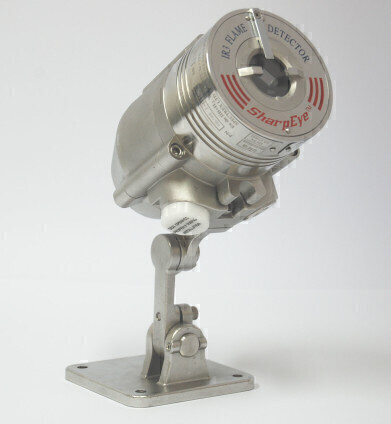Gas Detection
New Optical Fire Monitoring for Waste Disposal Facilities
Apr 08 2009
The unique fire and explosion hazards in municipal and industrial waste disposal facilities has led Spectrex (USA) to provide its explosion-proof SharpEye 40/40I Optical Flame Detectors to protect these facilities.
The new SharpEye 40/40 Series Flame Detectors offer enhanced reliability and durability with an extended 5 year warranty. All are fitted with heated window to withstand the harshest of conditions, HART output to offer quality information during installation or maintenance. Most have an enhanced detection distance and larger field of view than before.
All these detectors are Hazardous Area approved (FM/ATEX/IECEx/CSA and more) for location in zone I areas and 3rd party Performance approved (EN54-10, FM, DNV).
The outdoor storage areas for waste bales (residential waste) which are often stored at high locations experience fires due to the spontaneous heat accumulation of the waste or ignition of hazardous materials such as flammable liquids or gases in the waste. The waste bales are packed in polyethylene foil, which is usually difficult to ignite; however, smoldering fires tend to spread from inside the bales and, if not detected in time, may cause large fires and sometimes explosion due to gaseous pockets within the waste storage area.
Positioning optical flame detectors along the edge of the waste pit enables continuous monitoring of the waste pit over large areas of bulky refuse storage. A typical fire protection system consists of infrared fire sensors located on the pit ceiling (if it is closed) or along its perimeter edge, fire extinguishing equipment on the upper part of the wall (water monitor/ water discharge nozzles), a fire monitoring panel, fire extinguishing equipment control and operation panels in the trash bunker crane operation room, and a water supply source, including a pump and piping.
In the case of larger pit bunkers, the fire location is identified at a very early stage by the unique Triple Infrared (IR3) 40/40I fire detector and the water monitor is automatically directed at the fire source according to the fire location information. In the case of smaller pits, when a fire is detected and its location is identified, water is immediately discharged from the water discharge nozzle(s) locally onto the location or in the entire area
Digital Edition
IET 34.2 March 2024
April 2024
Gas Detection - Biogas batch fermentation system for laboratory use with automatic gas analysis in real time Water/Wastewater - Upcycling sensors for sustainable nature management - Prist...
View all digital editions
Events
Apr 30 2024 Melbourne, Australia
Apr 30 2024 Birmingham, UK
May 03 2024 Seoul, South Korea
May 05 2024 Seville, Spain
May 06 2024 Minneapolis, MN, USA


















